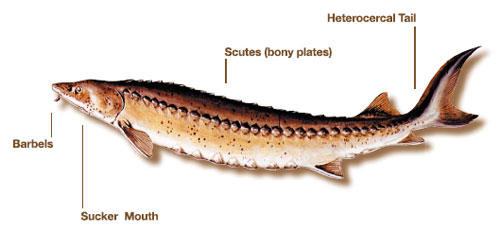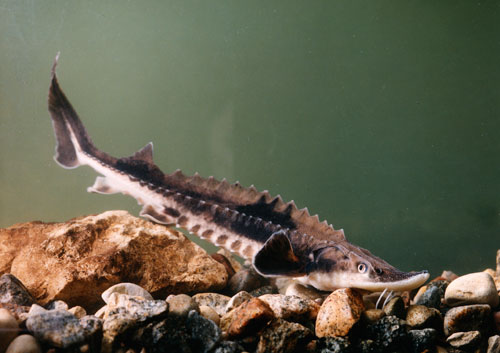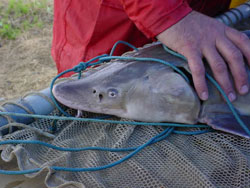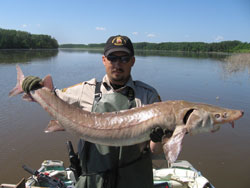Introduction to Life History
- Survivors of a prehistoric age, sturgeon today look much the same as fossils from 100 million years ago. Sturgeon are benthic or bottom-dwelling fish and many of their physical characteristics are an adaptation to this benthic environment.
- Sturgeon have no teeth, a sucker like mouth, bones made of cartilage, a shark-like tail and five outer rows of scutes (bony plates). On young sturgeon the scutes have little hooked spurs that make them unappealing to predators like walleye and pike.

- Heterocercal tail
- Shark-like asymmetrical tail.
- Scutes
- Bony plates with little hooked spurs that can be as sharp as razor blades. The scutes make the young sturgeon unappealing to predators like walleye and pike. As the sturgeon grow the scutes wear down and size becomes the sturgeon's defence.
- Barbels
- The four barbels (or whiskers) hanging on the front of a sturgeon's mouth help ‘smell’ or taste food in the water.
- Sucker Mouth
- Sturgeon have no teeth. When they find food, they extend their tube-like mouth and quickly suck it in firmly clamping their prey in their jaw. Sturgeon feed mainly on the stream bottom and will eat anything from insect larvae to leeches, crayfish and small fish.
Differences between a young sturgeon and an adult sturgeon
Young sturgeon
(heterocercal tail), long snout, scutes (for protection from predators), barbels, sucker mouth, color blotches

Adult sturgeon
(heterocercal tail), blunt snout, smooth body, barbels, sucker mouth, uniform color and milky white belly.

